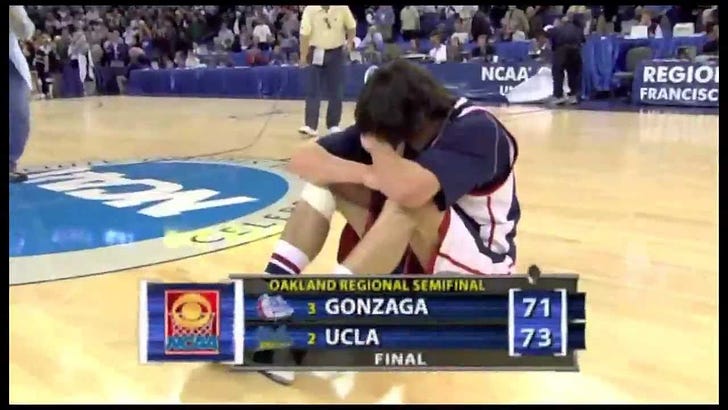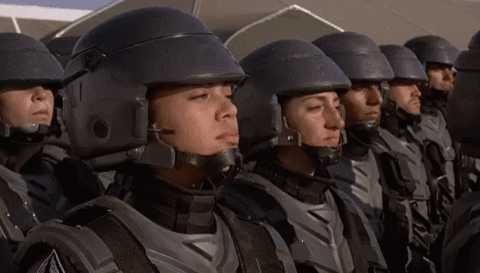Press Break Q&A: Conference Tournaments, Getting Kids into Sports, and More
This. Is. March.
The Press Break Q&A returns on this most wonderful of months, ready to take on YOUR questions. Have a topic you’d like to see addressed here? Shoot me a tweet @KyleKensing, or email pressbreaknewsletter@gmail.com.
Conference tournament season is a lot like eating at McDonald’s: tasty, indulgent, makes you feel awful afterwards but dammit if once a year you don’t crave it.
I write that conference tournaments make you feel awful after because it sucks seeing a great mid or low-major regular-season champion bounced, a 30-plus game season invalidated in a single contest. But such is the intrigue of March basketball.
And, were it not for conference tournament upsets, we wouldn’t have gotten UMBC’s historic defeat of Virginia in 20181.
Thus understanding the consequences, I plug myself into as much of Championship Week as possible. The one-bid conferences offer the most drama, functioning as microcosms of the NCAA Tournament itself. To that end, I’m most anticipating are the Colonial and WACVegas.
The CAA features five teams that I legitimately think could win the automatic bid, though No. 1 seed Towson has been playing markedly better basketball than just about anyone else for the past three weeks.
A case could be made that Towson deserves at-large consideration; the Tigers rank in the 50s of both NET and KenPom, which would be a slam dunk for most power-conference bubble teams. I asked Towson coach Pat Skerry this week about his team’s at-large resume and he joked that if I could make that happen, it would be nice.
Well…
But, I also doubt I have much pull with the Selection Committee, thus the CAA is a one-bid tournament. UNCW is one of the most remarkable stories in college basketball this year, going from the bottom of the CAA to a shared regular-season title. Delaware and Drexel both have elite playmakers who can carry their teams to the championship, and Hofstra features Aaron Estrada, the league Player of the Year.
It should be an exciting and wide-open tournament. Likewise, on the other side of the country, the Western Athletic Conference Tournament — WACVegas, as it’s known — used to be the New Mexico State Invitational. The Aggies are again one of the teams to beat, but not necessarily the team to beat.
Grand Canyon is the reigning WAC champion and a contender to repeat, but perennial Southland Conference heavyweight and recent Cinderella Stephen F. Austin will be gunning for that auto-bid. The Lumberjacks just beat NMSU in Las Cruces, which WAC teams simply don’t do.

So a bit of a teaser, but I’m working on an in-depth feature for Awful Announcing on the evolution of March Madness broadcasting that focuses on key years in its history. Being a ‘90s child, I’m old enough to recall my dad letting me stay home for the Thursday-Friday games and watching CBS jump around from broadcast-to-broadcast.
While I would love for a network under the Viacom and Time Warner umbrellas to function as a March Madness RedZone of sorts, this being the exclusive way to follow the tournament was suboptimal.
The advent of the Mega March Madness pay-per-view was a game-changer; being able to see every second of every game is absolutely the way to go, and the partnership with Turner networks making that more accessible is a huge win.
In the first few days with plenty of overlap, I go dual-TV with an iPad for a third game. Game intensity dictates screen size. One challenging aspect is that the TVs are both on Roku streaming, and the remote changes both sets simultaneously, so I have to physically move one of the TVs out of the beam range to change a channel. Annoying, but a small price to pay.

Actual participation, I have found in my experience, is the best way to cultivate interest in watching. Even then, my oldest loves to play basketball but is only just beginning to warm up to watching. Baseball is probably his favorite sport for participation but least favorite to watch.
The current generation of children love video games and devices more than us Millennials. Leveraging this fascination as a gateway to sports helps. My wife purchased our son a subscription to Dribble Up, an app with a QR-coded basketball to track his dribbling drills. By simple virtue of playing basketball “on the iPad,” he’s locked in and actively passionate about practicing.
To that same end, building up YouTube playlists of highlights has started to pique his interest more in watching basketball. That’s not wholly unlike my own development as a sports fan, as I credit my dad buying me NBA Superstars on VHS a lot for getting me into the game.
BASKETBALL
Arizona’s defeat of Kansas in the 1997 Sweet Sixteen. The Paul Pierce-led Jayhawks were essentially penciled into the Final Four upon the release of the brackets, and a Southeast Regional final that included 10th-seeded Providence, 14th-seeded Chattanooga and a fourth-seeded Arizona that struggled to beat South Alabama and Charleston in the two opening rounds only intensified that chatter.
KU lost just once in the regular season, but UA punched the Jayhawks in the mouth and led almost the entire way en route to one of the more noteworthy upsets of the last 25 years.UCLA beating Gonzaga in 2006. Revisionist history and his lack of success in the NBA might tell you otherwise, but don’t get confused: Adam Morrison was one of the best college basketball players of the last 30 years. Morrison was an elite scorer with a type of offense that seemed tailored to the direction the NBA was headed, and Gonzaga was almost a favorite pick to reach the Final Four out of the West Regional despite its No. 3 seeding.
However, an underrated UCLA team stunned the Zags in a terrific game. Part of the reason I hold such fond memories of this: I was in an eight-person pool wherein each participant drafted eight teams from the tournament field. Entry was $50, you got your $50 back with advancement to the Final Four, and each win thereafter was more. I took the Bruins with my first-round pick and they advanced to the title game.My fifth-round selection that year? George Mason!
FOOTBALL
On a Saturday morning in 1996, my dad gets a phone call from the grandmother of a close school friend. They held season tickets for Arizona State football, and had an extra available that day. Although not an ASU fan, I was more than happy to attend a college football game with a buddy. And HOLY COW, what a game it was.
This remains one of the greatest regular-season college football games ever played, and I was fortunate enough to be there.
Utah winning this past season’s Pac-12 championship. Knowing how much that Utes team endured with the tragic deaths of Aaron Lowe and Ty Jordan, I don’t think I have ever been as happy to cover a squad’s victory. Allegiant Stadium in Las Vegas was a sea of red and just a joyful atmosphere. When The Moment of Loudness that plays in Rice-Eccles Stadium, commemorating Lowe and Jordan came on, I teared up. Special moment for a special team.
Ortege Jenkins’ Leap By The Lake. Believe it or not, I was once a spazzy teenager without many friends and spent most of my weekends in high school watching college football/basketball or a combination of pro wrestling/UFC/horror movies on VHS. In 1998, I had no date for the Homecoming dance — which was for the best, because it meant I got to see Arizona quarterback Ortege Jenkins score on maybe the single-most memorable play in Arizona football history.
Speaking of Arizona football, that’s a good segue into the next question!

Despite last year’s 1-11 record, which included a loss to Northern Arizona and the one win coming against a depleted Cal team, Arizona football has more reason for optimism now than at any time in the last five years.
Jedd Fisch was a quizzical hire at the time, but after a year he seems to get what makes college football special — that a football program is part of the university and community at large — and he has a grasp on program-building. The 2022 recruiting class being so loaded bodes well for the future, but the immediate future will still be rocky.
Arizona is going to be play a LOT of first-year guys in 2022, I suspect. Add that the non-conference schedule is brutal with UA visiting noted Pac-12 killer San Diego State, hosting FCS juggernaut North Dakota State and Mississippi State making a rare SEC appearance in the West, and anything better than 0-3 to start Pac-12 play should be viewed as a win.
In terms of the South, however, Arizona has place for upward mobility. Utah is going to be excellent in 2022 and I suspect the Utes cruise back to Las Vegas. UCLA is the most likely contender; maybe USC exceeds expectations, but Lincoln Riley faces more rebuilding than national takes purveyors seem to realize.
Colorado’s outstanding 2020 looks like more of an aberration than return to contention, and Arizona State’s awful offseason doesn’t exactly set the tone for a needed breakout season under Herm Edwards.
A bowl game is unlikely, but Arizona has positive momentum for the first time since Rich Rodriguez’s ouster.

Before diving in, let’s take a moment to appreciate how awesome Ring of Honor was from mid-2004 through the CZW feud two years later. The latter half of Samoa Joe’s ROH title reign, American Dragon’s rise to the main event, Summer of Punk, and Kobashi’s double-shot at the tail end of what I consider to be among the greatest individual runs of all-time remain some of the peak professional wrestling of all-time.
Joe was an amazing champion from spring 2003 to Final Battle 2004, but ROH was still a relatively niche federation at that time. I consider the Kobashi match, coupled with his triple threat against Christopher Daniels and A.J. Styles just three weeks earlier in TNA, to be what elevated Joe to true, top-bill status for any organization around the world.
In that sense, Joe going into the Kobashi match could be analogized to an elite mid-major program on the cusp of becoming a nationally recognized brand. Ergo, Samoa Joe is Gonzaga.
The ROH Championship run is Gonzaga’s stretch from 1999 through 2001, which established the Zags as a top mid-major but not quite recognized as on the same level as major-company main eventers. Case in point, the 2002 Zags were a No. 6 seed despite spending much of that season ranked in the top 10, and they were given a brutal first-round matchup against Wyoming.
One game that I credit for gradually turning the tide in Gonzaga’s favor was the 2003 2nd Round matchup against Arizona.
Like Kobashi in 2005, Arizona in 2003 was at the end of its peak but still near the game’s pinnacle. The Wildcats were six years removed from a national championship, two removed from playing in the title game, and had made the Final Four four times in 13 years. That team in particular spent most of the regular season ranked No. 1 in the country.
And, like Joe-Kobashi, the ‘03 Arizona-Gonzaga game was an instant classic.
Gonzaga lost, but the performance helped elevate the program’s profile. Like Samoa Joe, it would take another few years to get its proper due, but I credit this game — as I credit the Kobashi match — for starting that process.
This is me justifying going to McDonald’s: “I got unsweetened iced tea to drink. Plus, look at how many grams of protein are in this Double Quarter-Pounder!”






